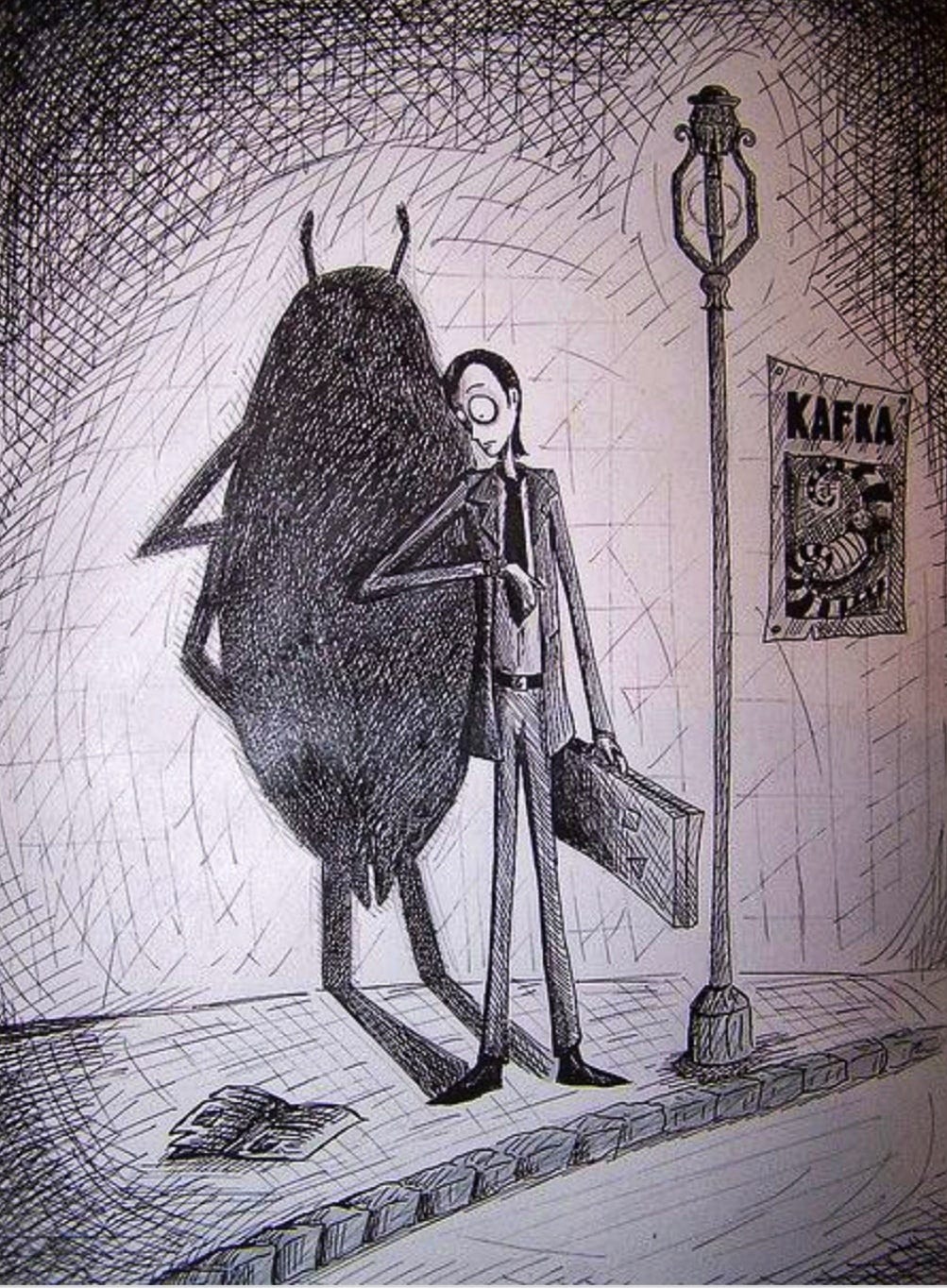In Kafka’s “Metamorphosis,” readers are thrust into the eerie and contemplative tale of Gregor Samsa. The young man awakens one day to discover that he has transformed into a colossal bug. This strange and unnerving premise symbolizes an existential quandary, a feeling of detachment, and how modern society can dehumanize. Gregor’s transformation is the focal point of the story, expressed in a direct and austere tone, highlighting its peculiarity while exploring his inner turmoil. Kafka artfully paints Gregor’s loneliness as he contends with his insect physique and strives to connect with his kin, who at first respond with awe, terror, and ultimately apathy.
Kafka’s exploration of the loss of agency, identity, and otherness is a prominent feature in the novella. The human world slowly excludes Gregor following his transformation, underscoring the ways in which societal expectations and familial obligations can be dehumanizing. Its deep themes probe the inner psyche from the viewpoint of Gregor.
Precision and starkness define Kafka’s writing style that keeps readers on edge as they follow the narrative. Surrealism and allegory add depth to the story, encouraging readers to analyze the themes of humanity, conformity, and the quest for purpose in an absurd world. The unease and disquietude that permeate the text are designed to linger, provoking thought and stimulating conversations.

In Kafka’s literary works, the atmosphere of unease and disquiet is consistent due to its precision and starkness. The writer’s use of surrealism and allegory generates conversations amongst readers about humanity’s nature, conformity, and the pursuit of significance in a seemingly ridiculous world, inviting interpretations beyond the story’s literal meaning
